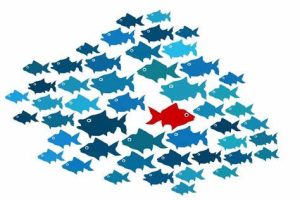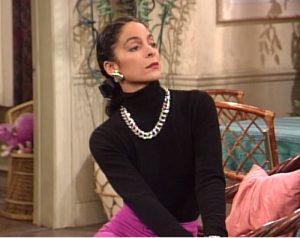The Same, But Different
 An increasingly prevalent saying when making a before-and-after comparison is: “It’s the same, but different.” Depending on the context and inflection, this can convey a variety of meanings, ranging from dry humor to jaded irony to caustic sarcasm and beyond. It is the latest example of the risk of taking words too literally.
An increasingly prevalent saying when making a before-and-after comparison is: “It’s the same, but different.” Depending on the context and inflection, this can convey a variety of meanings, ranging from dry humor to jaded irony to caustic sarcasm and beyond. It is the latest example of the risk of taking words too literally.
Despite the potential for misinterpretation, the line is certainly creative. It is also more nuanced than examples that have worked their way into popular music, such as Same Old Song and Dance (Aerosmith) and Same Ol’ Situation (Mötley Crüe) — not to mention vernacular alternatives as blunt as “same s[tuff], different day” (the average male).
And from the other side of the statement, we have been blessed with sayings like “vive la difference”, as well as appropriate song titles like Joe Jackson’s It’s Different For Girls. For those of us that were college students in the late 1980s and early 1990s, there was the TV sitcom A Different World. This popular spinoff from The Cosby Show made a star out of Jasmine Guy, through her portrayal of elitist but gorgeous debutante Whitley Gilbert. (Occasionally, I wish I could affect her character’s refined southern purr!)
So to describe something as “the same, but different” can lead to many potential interpretations – good, bad or anywhere in between. From a personal perspective, I can best reflect upon it in the context of completing my third year of transition to full-time transgender living. Life today compared to then truly is the same in many ways, and different in others.
Beginning with the simple act of daily preparation, getting dressed each work day is the same as ever in the macro sense: I wake up, shower, dress, prepare my hair and face, and leave for work. But at the micro level, the details certainly are different. When I awake, the sleepwear I change out of is prettier; the time spent in the bathroom is longer and more thorough than simply a shower and shave. Between product, blow drying and straightening, my grown-out hair takes much longer to make presentable. Getting my face ready for the public means taking the time to coordinate my makeup colors with my outfit.
And regarding the outfit, this also is refreshingly different from before; there are so many more options in style, fabric, color, pattern, accessories, etc. However, I believe that the quality of my appearance more than offsets the extra effort. I have evolved from dressing functionally and effortlessly, to dressing with a daily statement in mind. I enjoy the creative and artistic aspect to this process, and seek to make a positive impression when I go out each morning.
 Women I encounter are quick to offer encouragement and compliments when they think I look nice. A neighbor who now works from home recently mentioned in a casual conversation that she “looks forward to the fashion show” when I leave for work in the morning, walking past her ground floor window on the way to my car. Even something as simple as my manicure color can make a favorable impression; as she was ringing up my purchase, a young sales rep at Ulta complimented my sparkly spring lilac nails, and asked me to identify the specific color.
Women I encounter are quick to offer encouragement and compliments when they think I look nice. A neighbor who now works from home recently mentioned in a casual conversation that she “looks forward to the fashion show” when I leave for work in the morning, walking past her ground floor window on the way to my car. Even something as simple as my manicure color can make a favorable impression; as she was ringing up my purchase, a young sales rep at Ulta complimented my sparkly spring lilac nails, and asked me to identify the specific color.
At work, although I changed positions shortly after my transition began, my daily work experiences have not changed. I arrive to the office every morning, interact with many of the same people as before, do my best to be a responsible and professional colleague, perform my job successfully, and go home at the end of the work day.
But now I enjoy being at work more. I like making a good impression on my colleagues, and putting my best face forward. (It’s almost certainly a selfish instinct, but I do like being seen.) Even though we are now a relaxed casual office, I still occasionally wear office-caliber skirts and nice shoes, even with nylons. It is much easier to greet and start a conversation with my female colleagues, when my sense of style is able to break the ice for me. And I like being able to appropriately comment on their appearance, without raising eyebrows any longer.
They in turn have clearly assessed me as a confident person that they enjoy working and socializing with. I hear “she” and “her” directed toward me on a routine basis, but now I occasionally hear terms of endearment like “girlfriend”, “chica”, etc. (I have never taken the lead on that, let alone compelled it from others, but I happily reciprocate the courtesy.) A recently hired colleague and I have become weekly lunch partners. To her, I am clearly one of the girls in the department. This is definitely a different and better experience.
Socializing in general is also still the same, in the sense of taking the time to maintain relationships and stay in touch with family and friends. But now that I have girlfriends (in the platonic sense), some things that had remained obscure to me are beginning to reveal themselves. I recently watched the 2014 movie Boy Meets Girl, and one line that really stuck with me was when stylish Alexandra explains to Michelle: “Well, we don’t dress for them [i.e. the boys].” I had never caught onto this fact before, but it is clearly true. The average male does not appreciate the effort involved in what it takes for a female to dress attractively. And why would he? Odds are he was never exposed to this level of information in his formative years, and never had the occasion or reason to seek it out, since it provides no practical advantages to him. If he comments on a woman’s attractiveness, it will usually be her physical aspects — not how well she may blend colors in her outfit, or use style to emphasize her best features.
And in fact, I have observed that women do dress up for me. When I met a new friend for a Friday dinner out together recently, she wore a pretty dress, nice shoes, and sported a fresh manicure. She is rather stylish, and most likely she would have done so anyway. But perhaps she instinctively expected that a fellow girlfriend would recognize and appreciate the effort in preparation that she made. It certainly showed that she valued my company. There are more comfortable ways to dress casually, especially in late February in the Keystone State. The conversation was enjoyable and continuous — exactly what would be expected from two ladies enjoying a pleasant kickoff to the weekend.
These are simply a few examples of how women and men are (you guessed it) the same, but different, in the best sense of those terms. Even after a life transition of such magnitude, I am still the same person that I was before, and my past matters; it formed my present, and guides my future. People that have known me before and after my transition still recognize the same me, despite my different outward appearance. “It’s the same, but different” implies continuity. We should embrace both adjectives for ourselves in positive ways.
Happy Easter to everyone! God bless you all!
Category: Transgender Opinion





